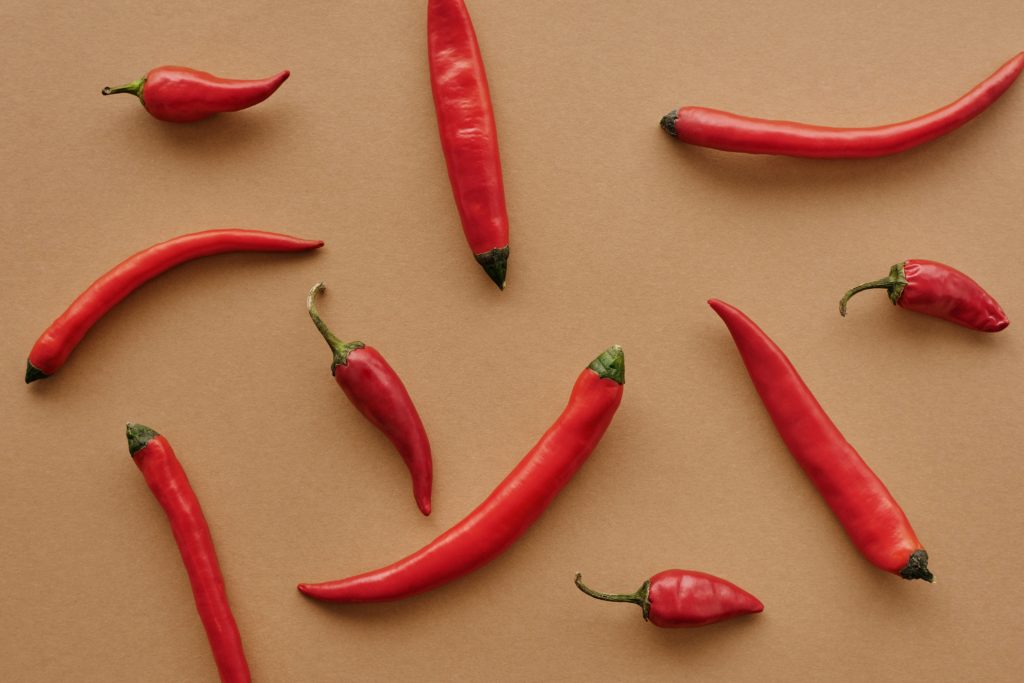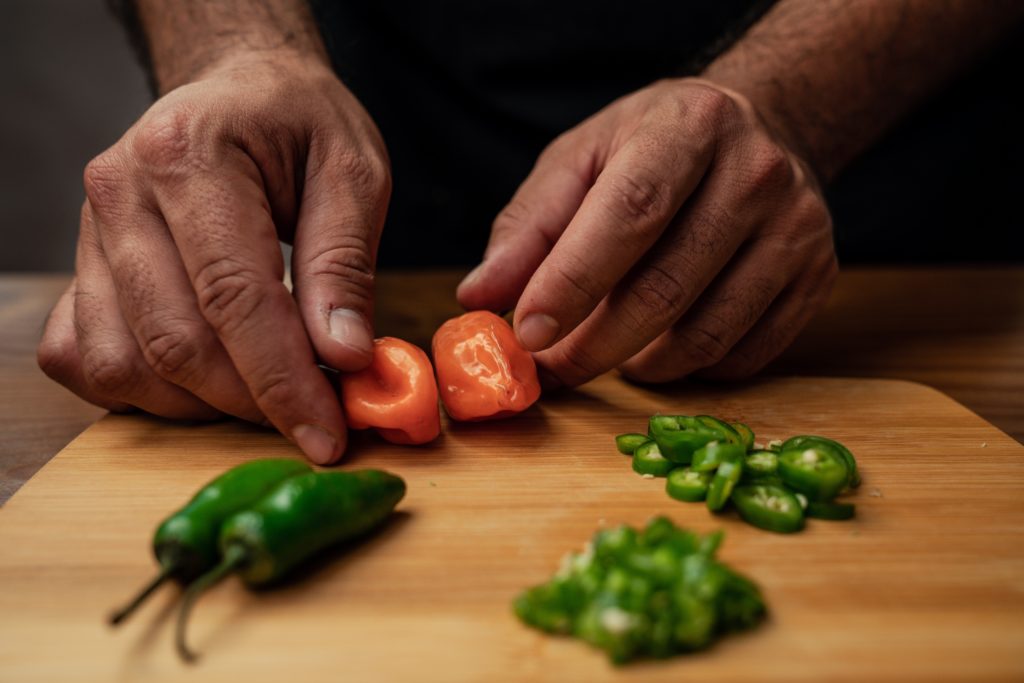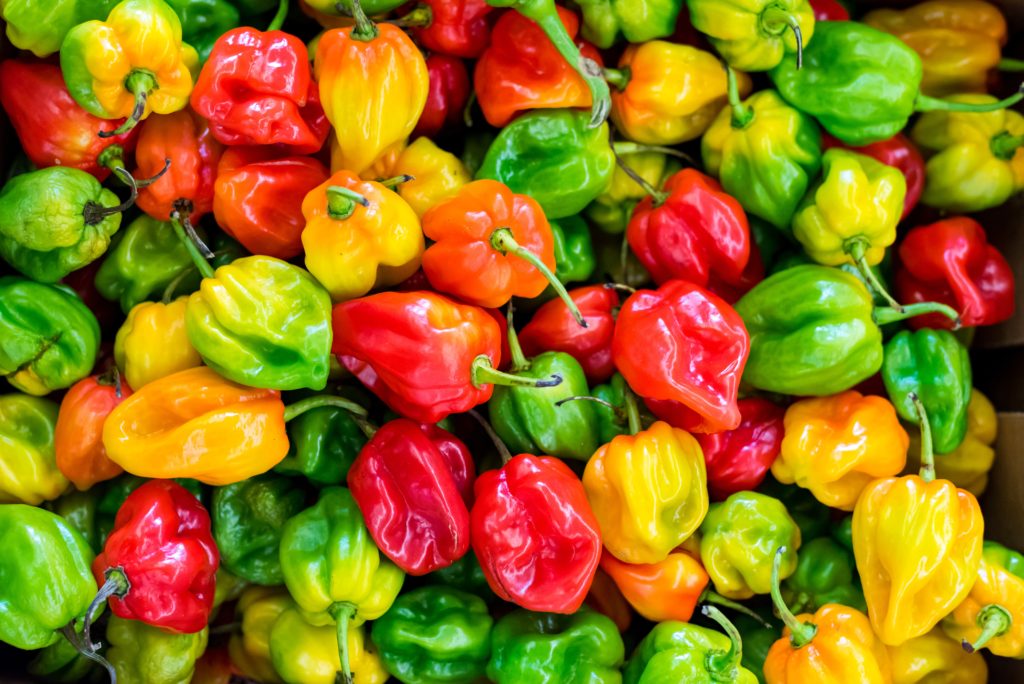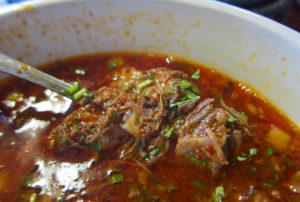
Chilli is a key ingredient for preparing the moles, marinades and sauces that make our Mexican tacos in Madrid so irresistible.
It is one of the cornerstones of Mexican cuisine, providing flavour, texture, colour and, in many cases, an interesting spicy touch.
A product that has been part of the Mexican diet since pre-Hispanic times, when food was based on corn, beans and pumpkin.
There are 64 different types of chillies registered in Mexico, which can be consumed fresh, dehydrated, cooked or industrialised for use as condiments.
Chilli, a source of vitamins
Chilli peppers are rich in vitamins A and C, carotenoids, fibre and minerals. It belongs to the genus Capsicum, which includes 26 wild and five domesticated species, all native to the Americas.
Chilli peppers are classified into hot and sweet peppers. According to the degree of ripeness, we distinguish between green and dried. Dried chillies include dried chillies and smoked chillies such as the chipotle chilli.
The production of green chillies includes jalapeno, morrón, poblano, serrano, chilaca and anaheim chillies. The dried chillies most commonly used in establishments such as Las Taquerias are: ancho, mulato, chilhuacle, chipotle, morita, colorado and de árbol.
How is hotness measured?
The Scoville scale is used to measure the level of spiciness. Developed by an American pharmacist in 1912, it involves diluting the chilli extract in sugar water. As the amount of water is increased, the capsaicin (the substance responsible for the heat) begins to lose its strength. The more water it takes to make the spiciness undetectable, the higher the chilli will rank on this scale.
For example, a sweet pepper contains no capsaicin and is at 0 on the scale. On the other hand, the habanero chilli reaches 300,000 units, i.e. its extract has had to be diluted 300,000 times before the capsaicin is undetectable. For those who are not so keen on spiciness, the only thing to do is to discard the seeds and veins of the chilli, where the capsaicin is concentrated.
Types of chilli. The 4 most famous
Jalapeno Pepper

The jalapeno pepper is a type of pepper commonly used in Mexican cuisine. It is a medium-sized chilli pepper that is typically 2 to 3 inches long and 1 inch wide.
The jalapeno is known for its mild to medium heat level, ranging from 2500 to 8000 Scoville units.
Jalapenos are often used in a variety of dishes, such as salsas, guacamole and nachos. They can be enjoyed raw or cooked, and are often stuffed with cheese or meat and then fried or baked.
Jalapenos are also used to make chipotle chillies, which are smoked and dried jalapenos. These are commonly used in marinades, sauces and condiments to add a smoky, spicy flavour to dishes.
Serrano Pepper
The Serrano chilli is a type of chilli that originates from Mexico. It is a small, thin-walled pepper that is usually green when unripe, but turns red as it ripens.
The Serrano chilli is known for its moderate to high level of heat, which can range from 10,000 to 23,000 Scoville heat units (SHU). It is commonly used in Mexican cuisine to add flavour and spiciness to dishes such as salsas, guacamole and stews.
Serrano chilli can be eaten raw or cooked, and is also often pickled or preserved. It is a popular ingredient in many recipes throughout Mexico and is also gaining popularity in other parts of the world.
Habanero Pepper

The habanero chilli is a type of chilli that is grown mainly in the Yucatan Peninsula in Mexico and in other parts of Central and South America.
It is a small, lantern-shaped pepper that is usually orange or red when ripe, but can also be green, yellow or brown.
The Habanero pepper is known for its extreme heat level, ranging from 100,000 to 350,000 Scoville Heat Units (SHU), making it one of the hottest peppers in the world.
It is often used to add flavour and heat to dishes such as marinades and hot sauces. It is also commonly used to make hot jams and jellies.
Manzano Chili
The Manzano chilli, also known as Rocoto in some parts of South America, is a type of chilli that is native to Mexico, Central and South America.
It is a small, round or pear-shaped pepper that is usually red or green in colour when ripe, but can also be yellow, orange or brown.
Manzano peppers are known for their moderate to high heat level, ranging from 12,000 to 30,000 Scoville Heat Units (SHU).
For this reason, Manzano peppers are commonly used in Latin American cuisine, particularly in Mexico, Peru and Bolivia, often to add heat and flavour to dishes such as soups, stews and sauces.
It is also used to make spicy condiments, such as salsa and hot sauce. Manzano chili has a fruity and slightly smoky flavour that goes well with meats, seafood and vegetables.
If you don’t have time to cook or want to enjoy a different kind of dinner, remember!
At Taqueria de Birra we are experts in tacos and Mexican food since 1989, so if you want to taste tacos in the purest Mexican style, we invite you to order to take away or come and try them at C/ Don Pedro, 11 or at Plaza de las Comendadoras, 2.




